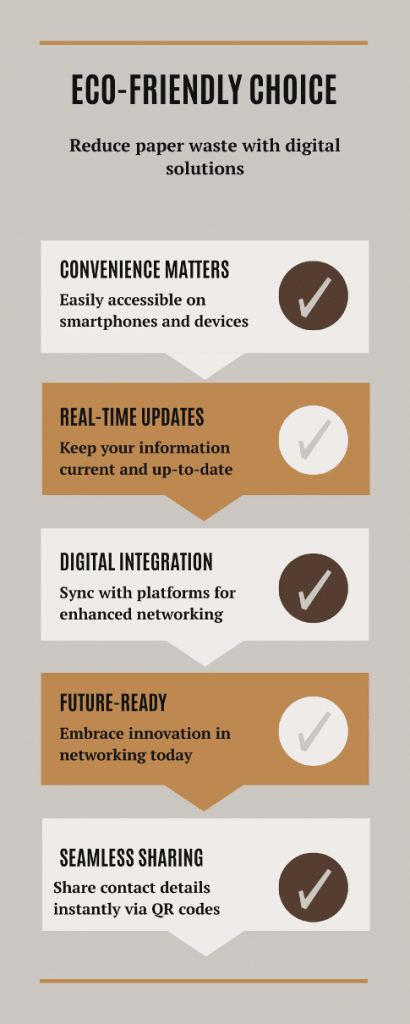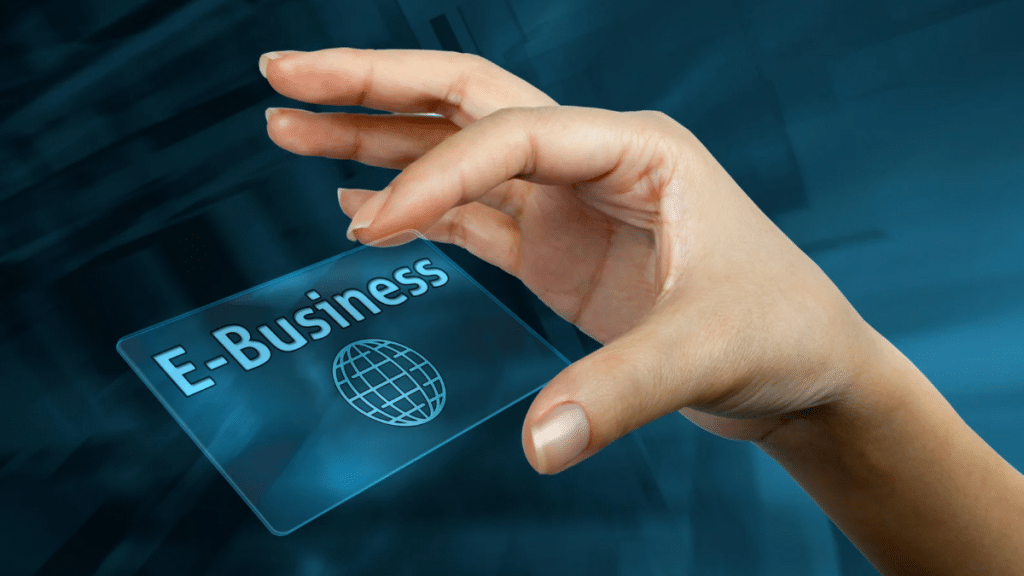The business card has been a networking staple for centuries, but it’s rapidly evolving in our digital-first world. Traditional paper cards often end up forgotten in drawers or tossed in the trash – in fact, a staggering 88% of paper business cards are thrown away within a week of being received. This practice is just one reason professionals are embracing modern alternatives.
Today’s networking landscape demands solutions that are more sustainable, interactive, and aligned with how we communicate. From conference rooms to coffee shops, the way we exchange contact information is undergoing a profound transformation that promises to make connections more meaningful and lasting.
The Digital Transformation of Professional Networking
The business world is constantly evolving, and our networking tools must keep pace. Traditional paper cards have served us well, but their limitations have become increasingly apparent.
The Limitations of Traditional Networking Methods
Paper business cards may feel professional, but they come with significant drawbacks. They’re easily lost, quickly outdated, and offer limited information. When you change jobs or update your contact details, those hundreds of cards you distributed become obsolete. In Germany, the digitale visitenkarte (digital business card) has gained significant traction as professionals recognize these limitations and seek more flexible solutions.
Environmental Impact of Paper Cards
The environmental toll of traditional cards is substantial. Billions of business cards are printed annually, requiring massive amounts of paper, chemical inks, and energy. Most end up in landfills, creating unnecessary waste in an era where sustainability matters more than ever.
Accelerated Adoption Post-Pandemic
The pandemic fundamentally changed how we network. With in-person events curtailed and digital communication becoming the norm, professionals needed new ways to share contact information remotely. This necessity accelerated the adoption of digital business cards across industries and age groups.
Core Technologies Behind Modern Digital Business Cards
Digital business cards rely on several innovative technologies to deliver seamless sharing experiences. Understanding these technologies helps you choose the right solution for your networking needs.
NFC Technology for Business: The Contactless Revolution
NFC (Near Field Communication) technology has revolutionized how we share information. This wireless communication protocol enables devices to exchange data with a simple tap.
How NFC Works in Digital Business Cards
NFC-enabled business cards contain tiny chips that store your contact information. When tapped against a smartphone, the card transfers this data instantly. No apps, scanning, or manual input is required – just a quick tap, and your details are saved.
Security Features of NFC Technology
Modern NFC technology for business includes robust security features. The transmission range is intentionally limited to a few centimeters, reducing the risk of unauthorized interception. Many systems also include encryption to protect sensitive information.
Real-World Applications
From major conferences to casual networking events, professionals are using NFC-enabled cards to make memorable first impressions. The tactile experience of tapping cards creates a unique interaction that stands out in today’s digital world.
QR Business Cards: Scan and Connect Instantly
QR codes offer another powerful way to share contact information digitally. These machine-readable codes have experienced a renaissance in recent years.
Dynamic vs. Static QR Codes
Static QR codes contain fixed information that can’t be changed after creation. Dynamic QR codes, however, can be updated remotely without changing the code itself, making them ideal for business cards where contact details might change.
Analytics Capabilities
One major advantage of QR business cards is their tracking capabilities. Many platforms provide insights into when and where your code was scanned, helping you measure networking effectiveness.
Cross-Platform Compatibility
QR codes work across virtually all modern smartphones without requiring specialized apps. This universal compatibility ensures your information is accessible to everyone, regardless of their device.
Strategic Advantages of Digital Business Cards
Beyond the core technology, digital business cards offer numerous practical benefits that transform the networking experience for both parties.
Environmental Impact and Sustainability
Digital solutions greatly reduce networking’s environmental impact by eliminating the need for paper, printing chemicals, and physical waste. They cut down on resource use like trees and water, avoid harmful chemical pollution from printing, and prevent the disposal of paper products. This makes networking much more eco-friendly and sustainable.
Carbon Footprint Reduction
By eliminating the need for paper production, printing, and shipping, digital business cards significantly reduce carbon emissions associated with traditional networking tools.
Alignment with Corporate Sustainability
Many companies have established environmental goals, and digital business cards help support these initiatives while demonstrating a commitment to sustainable practices.
Enhanced Analytics and Follow-up Capabilities
Digital cards transform networking from a passive to an active process through powerful tracking and follow-up tools.
Real-time Engagement Tracking
See when someone views your card, clicks your email, or visits your website – insights that paper cards could never provide.
CRM Integration
Many digital business card platforms integrate with customer relationship management systems, automatically logging new contacts and enabling streamlined follow-up.
Designing Impactful Professional NFC Business Cards
Creating an effective digital card requires a thoughtful design that balances information with visual appeal. The best cards make a strong impression while providing easy access to key details.
Brand Consistency and Visualization Strategies
Your digital business card is an extension of your brand identity. Maintaining visual consistency creates a cohesive professional image.
Essential Design Elements
Effective professional NFC business cards include clean layouts, readable text, and strategic use of color. The best designs balance minimalism with personality.
Mobile Optimization
Since most cards will be viewed on smartphones, ensuring your design works well on small screens is critical for success.
Content Optimization for Digital Business Cards
What you include on your card significantly impacts its effectiveness. Digital cards offer more space than traditional ones, but that doesn’t mean you should include everything.
Information Hierarchy
Organize content with the most important information (name, title, company) most prominent, followed by contact methods and social links.
Call-to-Action Placement
Include clear next steps for recipients – whether that’s scheduling a meeting, visiting your website, or connecting on LinkedIn.
The Global Impact of Networking Cards
Digital business cards are transforming connections worldwide, breaking down barriers, and creating new opportunities for global networking.
Cross-Cultural Business Card Etiquette in Digital Form
Different cultures have distinct traditions around business cards. Digital cards allow customization to respect these cultural norms.
Language and Localization Features
Many digital business card platforms support multiple languages, allowing you to present your information appropriately based on your audience.

Taking Your Professional Connections Forward
The shift to digital business cards represents more than just technological advancement – it’s a fundamental evolution in how professionals connect. By embracing tools like NFC technology for business, QR business cards, and other digital networking cards, you position yourself as forward-thinking while gaining practical benefits that paper simply can’t provide.
The future of networking is digital, sustainable, and data-driven. As professional NFC business cards become the norm rather than the exception, the connections we make will become more meaningful, lasting, and productive. The question isn’t whether to make the switch, but how quickly you can implement these powerful networking tools in your professional life.
FAQs
1. Are digital business cards secure for sharing contact information?
Most digital business card platforms use encryption and secure transmission methods. Many also let you control exactly what information is shared with each recipient, giving you greater privacy control than paper cards ever could.
2. How do QR business cards work if someone doesn’t have a QR scanner?
All modern smartphones have built-in QR scanning capabilities through their camera apps. No additional software is needed – recipients simply open their camera and point it at your code.
3. Can networking cards be updated after I’ve shared them?
Yes! This is one of the biggest advantages of digital business cards. When you update your information on the platform, it automatically updates everywhere your card has been shared – no reprinting necessary.

